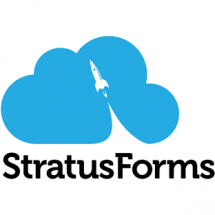There have been a number of articles lately discussing why companies cannot find the right person to manage their SharePoint environment. The other thing I’ve seen lately is a rant on why you need to hire a $200/hour consultant to deploy a successful SharePoint solution. (Which I don’t believe to be true…more on that later) Neither of these articles discuss the ‘why’. Why are these issues plaguing organizations? Go ahead, blame it on lack of talent. It’s true, it’s hard to find good people. I think we all know that throwing money at something can sometimes work out. But it’s never a guarantee. We’d all drive a Mercedes if we could afford it right? But we don’t all need to drive a Mercedes to get to work every day. The bigger problem is a lack of understanding. What is SharePoint? It means something different to each organization. As an industry we can’t even standardize our career paths. Architect, Admin, Developer, Business Analyst? Depends on the day… So if the industry can’t even decide who does what, how can you possibly find the person with the right skill set? And guarantee we are paying the ‘right’ amount of money for that resource?
What I dislike about the articles I frequently run into is that they are generalizing. I know an extremely talented independent consultant who works for $80/hour. I know larger consulting firms that charge $225/hour and have provided less than ideal work. So how do you know what you are getting? The truth is, the person, group, or company you hire should be highly dependent on your own organization and less dependent on the cost. If you hire a $60/hour resource into a highly organized establishment with a large amount of business savvy and you just need that resource to be a work horse given detailed requirements, you might be just fine. If you are an organization without much business savvy and lack the ability to detail requirements, then hire a $200/hour highly talented developer, you may get exactly what you asked for in a short amount of time. Which isn’t always what you need. Turns out, maybe you needed a little help getting the right requirements for what the team does…not what they SAY they do. Talented developers and a fantastic application don’t equal user adoption. How many of you have been through SharePoint projects, deployed amazing solutions, and struggled to get anyone to use them?
Let’s go back to the career path. Architects, Admins, Developers, Business Analysts, oh my. Let’s run through all of the possible skill sets you might need for a SharePoint project (note: before anyone wants to argue I’m wrong! I’m would like to reiterate that there is no industry standard, however these are simply my best effort at explaining what you will see on a resume and what it should generally relate to)
SharePoint Architect – Designs the physical architecture of the SharePoint farm. Understand installs, server configurations, server and application performance, and also be able to deploy development customization as needed. Architects are supposed to have the most wide reaching understanding and in some cases are expected to also be able to design and develop custom solutions. They should have an advanced understanding of SharePoint concepts and best practices. Example: You may need this role if you are designing a new environment for a large organization, which will have multiple connections into existing line of business applications in addition to some custom business critical applications.
Information Architect – Organizes information by understanding the target audience. May be involved in user interface design, navigation, taxonomy creation and metadata tagging. Understands web design and usability, preferences, and how users consume content. Implementing governance and retention policies may be part of their role. Example: You may need this role if you are trying to decide how to migrate away from file shares and begin using SharePoint for content management.
Note: Most organizations do not need a full time Architect on staff all the time. They are best utilized on a temporary basis when designing a new farm, upgrade, or piece of software in which the environment may be significantly impacted by the change.
- SharePoint Administrator – SharePoint Administrators often come from Network Administration backgrounds. With their strong understanding of servers and networks, they excel at maintaining a healthy SharePoint farm, running backups, and performing SQL maintenance. They can also attend to user requests for business connectivity services configurations, new site collections, and can install solution files created by developers. Administrators often come with Power Shell expertise for automating mundane SharePoint tasks and may be well versed in workflow tools like SharePoint Designer or third party tools like Nintex. Example: You may need a SharePoint Administrator for an on-premises installation to maintain a healthy environment, apply critical updates, and maintain SQL health.
SharePoint Developer – Developers tend to come in two subcategories, however many developers are well versed in both. In general, they are good at taking requirements to build custom solutions for SharePoint.
Front End Developer – this developer excels at jQuery, JavaScript and any code that can be launched without having to install it on the server. Often this code is used to create forms and other user experience related modifications.
Net Developer – this developer excels at creating larger scale applications. Typically working in Visual Studio, their code comes packaged in a solution file and must be deployed from the SharePoint server.
User Experience Designer – Designers will assist with creating a user interface so that SharePoint “doesn’t look like SharePoint”. They are in-tune to usability. Always look for a designer that understands SharePoint!!
Business Analyst – The analyst for SharePoint works like any other analyst in the organization. They simply know how to find user requirements, understand how to find business process improvements, and then map them to SharePoint functionality.
Project Manager – Understands that requirements change frequently in a SharePoint project. Good SharePoint Project Managers stick to a strict change management policy.
SharePoint Trainer – This one is pretty self-explanatory. The only advice here is to look for someone also willing to do videos! Training is great when you can embed it in the site and use it for future employees too.
End User Support – attends to questions like “How do I upload multiple documents” or “How do I open my document in the browser?” Your help desk may need training to cover these items after a new deployment.
These roles are just the beginning! There are also specialists, for example, a Search Architect that can come in to design a highly specialized search application for a particular need. Again, this may not be someone you hire full time, but instead contract for a specified period of time in unique scenarios.
Over time you may need all of those resources once you fully adopt SharePoint. Do you have them all internally? Before you hyperventilate ….know that most companies don’t. The real question is who do you need to supplement YOUR team? What short term and long term initiatives does YOUR organization have? Another quick note – as we talk about the different types of SharePoint talent – it’s really cutting things short the resources to stop there. We shouldn’t be limiting the SharePoint team to SharePoint people. You likely already have great project managers and business analysts, and department owners that can fill important roles on your SharePoint projects. IT – you need to loosen the reigns! Business participation creates accountability, engagement, and by-in. Stop making SharePoint projects into IT projects.
Going back to hiring. The problem is that even if you pay a full time hire the large dollar amount the market calls for – they are typically biased in a certain area. SharePoint folks come in many forms, but very rarely can they cover everything. Admins may keep a solid server environment, but fail to have the ability to find the business solution. Developers may try to code their way out of every scenario and it will cause problems when you try to upgrade or they leave and they haven’t documented anything. Architects can put great designs together but they could become bored with dealing with requests for permission changes and end user training. Even if you invest in a team – you have the issue of turnover when they leave and the cost of finding a replacement employee. Resources are in such high demand that this is a painful and expensive process. If someone claims to know all of these area well, run and run fast. It’s really not possible and if they really do know it all, they ought to have an MCM behind their name (Microsoft Certified Master) and they will almost certainly be a consultant billing $200+ an hour. If you can afford that, then go for it! It’s a great opportunity to work with a MCM and they will probably serve you well. Unfortunately there aren’t many (less now that the masters program isn’t even available anymore) and they will be hard to schedule and unaffordable for many.
My suggestion is to sit down and analyze your team. Where are your strengths? What do we already do well? What are the gaps? Write down the skills that are missing and find the right person, group, or consulting firm to help you fill those gaps. When you go to search for that person, understand that using the term “SharePoint Administrator” or “SharePoint Developer” may not provide the resumes you expect. My definitions provided above are simply my opinion and a best effort since there is not an industry standard. Plan to take your time sorting through them, understanding skill sets, and question candidates on their real life working experience and think about how they can relate to your needs.
If you decide this is too much trouble and just want to hire a consulting resource, then try to provide the consulting firm with that same list of needs. And if you just don’t know, let the consulting firm figure it out. A good one will fit you with the right resource at the right time.
Just remember, think about your organization first, and then go looking for more than just a title.













